Racism wears a Technicolor coat.
George Zimmerman, the 28-year-old killer of 17 year-old, African-American, high school student Trayvon Martin, is trying to build a defense ahead of what appears to be an inevitable criminal trial. Zimmerman's attorney has defended his actions saying "He's not a racist." Zimmerman's white, American father is adamant on the point, going as far as to emphasize the shooter's maternal Peruvian heritage. There is confusion about whether someone with partial Hispanic ethnicity can be racist. The answer is simply yes.
First, despite so much ignorance about what it means to be Latino or Hispanic, it is imperative to note this is an ethnicity, not a race. Hispanics can be of African, Asian, European or Indigenous descent. To that end, "Hispanics" have never been a monolithic, identifiable group. We are, after-all, living with the cultural realities of the New World, largely defined by its race-mixing. As one political commentator famously said of black people in America, "We had help getting to these shores."
To that end, Zimmerman's actions can be judged independent of what he looks like or his mixed background.
Listening to the numerous 911 tapes released following the brutal killing of young Trayvon, it is undeniably clear that Zimmerman ascribed prejudicial attitudes and stereotypes toward African-American males. In particular, he sought to define them as criminals, and pursued them as such, in his effort to prove himself as a pseudo-law enforcement officer.
That gross characterization of black males as potential threats within his gated community is as much a derivative of the dark story of racism throughout American history, as it is the fault of Hollywood and media images everywhere from the nightly news to hip-hop videos. What is now constructed as a popular, socio-political and culture image of a 'typical' African-American man isn't pretty. And more than a century after institutionalized slavery, old attitudes of black aggression and white fear still reign supreme. President Barack Obama's ascendency to the White House was a welcome surprise, but also fettered with difficulty and doubt. America may be more progressive now than at any time in her history, yet the shackles of our past have left visible marks. Black, brown and white alike are affected.
It is this conundrum of racism without racists that creates a society in which black males are perceived always and everywhere as the perpetrator, never given the dignity applied to a victim. Martin's death at the hands of a wannabe cop is only the latest example of inexcusable violence against young, innocent black males.
Amadou Diallo, shot 41 times in 1999 by four white officers in New York City while reaching for his wallet. Sean Bell, gunned down in 2006 by plain clothed officers on the night of his bachelor party. Fifty shots were fired because one officer claimed he heard someone say "get your gun" - though, of course, no weapon was found. In 2012 Trayvon Martin, on the phone to his girlfriend and armed with a bag of Skittles, is chased down, harassed and met with a bullet to the chest.
Zimmerman is the perfect example of the dangers of making assumptions. What he claimed was a "suspicious" man, who "looks like he's on a drugs", turned out to be a 17-year old child walking home to his father and brother to watch basketball.
Equally, the police officers who chose not to arrest Zimmerman presumed the words of a man with a criminal record had more weight than a silenced, unarmed child. That decision itself was imbued with antiquated racial assumptions: painting Martin with guilt, simply for his brown skin, and his youthful, manly frame.
The smearing and mischaracterizations didn't end with death. Recent conservative media reports have questioned Trayvon's innocence, by pointing to instances in which he was once suspended from school for drawing on a locker, or potentially experimenting with marijuana -- both things completely normal for an adolescent to do. It bears mentioning that Trayvon was an avid athlete, and described by teachers as an "A and B student." Yet the desire to frame him as something other than an All-American kid reflects the prejudiced narrative most used in this nation's dialogue on race.
Somehow elements of the American populace cannot suffice with Martin's innocence being absolute. Instead of focusing on Zimmerman's past, which includes documented cases of domestic violence against women, and a physical attack on a police officer, the Sanford police report focused on a child's youthful dalliances as suspicious -- and sought to frame him as the criminal.
This case matters because it speaks to the continuing struggle for equality and respect still being negotiated between America's past and America's future.
Our first African-American president is characterized by his political opponents as "un-American", "foreign" and "illegitimate." Trayvon Martin's body lay dead for three days before police officers thought it necessary to find his parents, and in the process, overruled their own investigator's suggestion to charge the boy's shooter -- opting instead to let Zimmerman walk as if no crime had occurred. This is where Pennsylvania Avenue meets the townhouse gardens of Sanford: namely, the life and legitimacy of black males aren't provided the equal birthright of American citizenship.
Respect for life, and dignity in death, is codified in the Declaration of Independence. African-American men, once defined as three-fifths of a person, deserve the same right to "life, liberty and the pursuit of happiness". Yet destructive attitudes have warped the broader social consciousness such that stereotypes and innuendo have greater legal authority than reality and humanity. And this poison of America's original sin has now infected the minds of brown, black and white.
Trayvon Martin's death represents a tragic miscarriage of justice, but perhaps it will serve as a teachable moment after which young black boys can achieve King's dream to be judged by the content of their character, allowed to walk home unfettered by the suspicion of others.